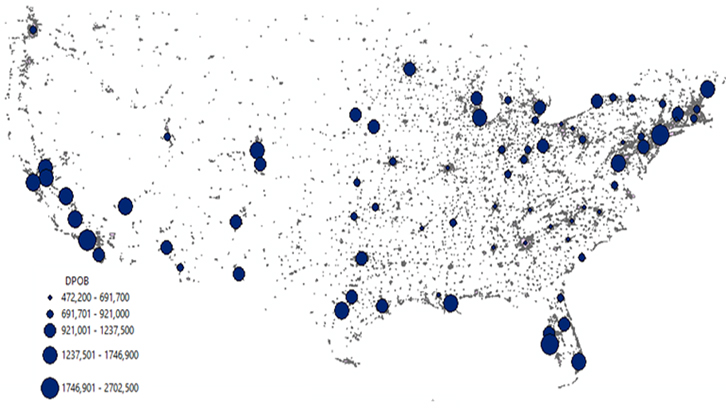The impact of the shape and urban spatial structure of the United States on the carbon footprint

High levels of CO2 in the atmosphere of Earth question the models of the actual larger metropolitan cities in terms of housing concentration and mobility distribution. The following study explores the U.S. case, which is characterized by an increased dispersion and pollution, and advises to promote density and polycentrism or monocentrism models given its positive effects in order to reduce the emissions.
This research seeks to explore the significant role of the shape and spatial structure of U.S. cities on the carbon footprint of mobility and housing (expressed in hectares of energy land, or forest space needed to absorb CO2 emissions), once considered in the model other factors that can explain the variability in the footprints such as temperature or per capita income. Specifically, the role of a urban density, the degree of monocentrism, the degree of polycentrism, and the degree of urban dispersion is addressed.
According to the Compact City Approach, denser and more monocentric cities should have lower emissions than sparsely populated and disperse cities. However, even if density generally has a positive effect on mobility, it does not have it on housing.
In relation to the effect of spatial structure, monocentrism and polycentrism have advantages in terms of low footprint compared to dispersed urban systems, confirming that dispersed urban growth is a problem for achieving a smaller footprint of cities in mobility and housing. These results support an urban and territorial policy that controls density levels, but above all, a territorial planning of a polycentric type alternative to the dispersion that characterizes the growth model of cities in the United States.
Department of Applied Economics.
Universitat Autònoma de Barcelona (UAB).
References
Muñiz, I., Dominguez, A. (2020). The Impact of Urban Form and Spatial Structure on per Capita Carbon Footprint in U.S. Larger Metropolitan Areas, Sustainability; 12(1), 1-19.

